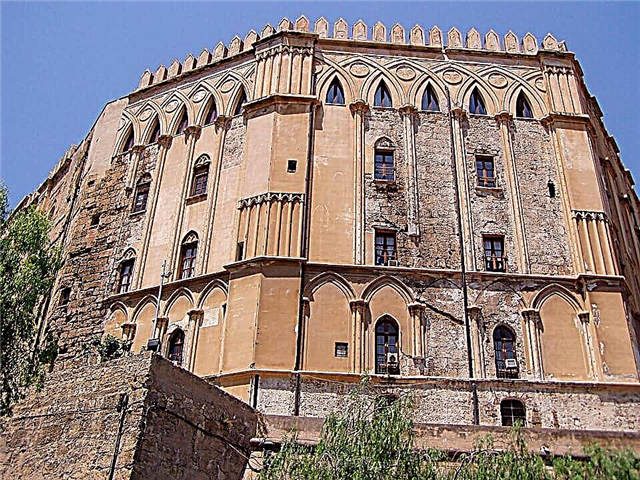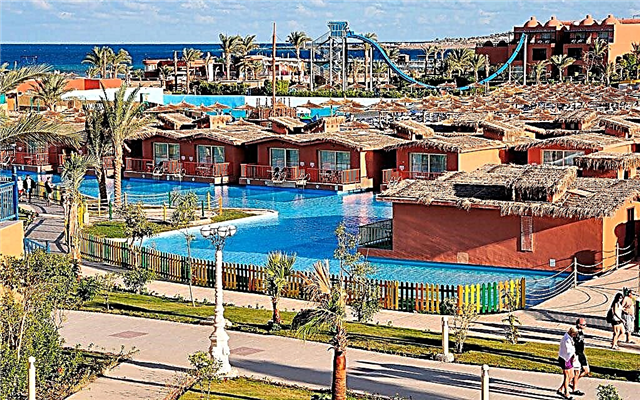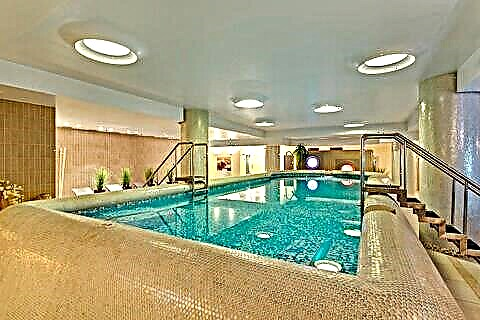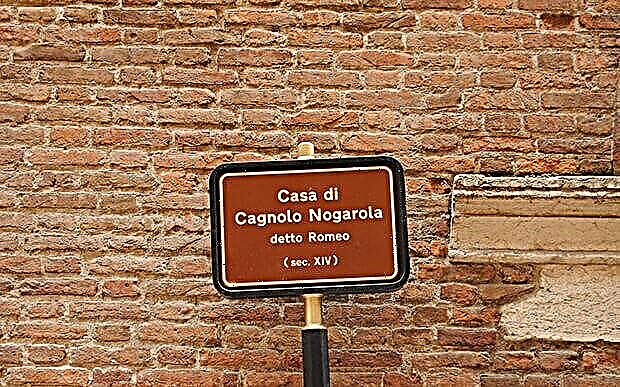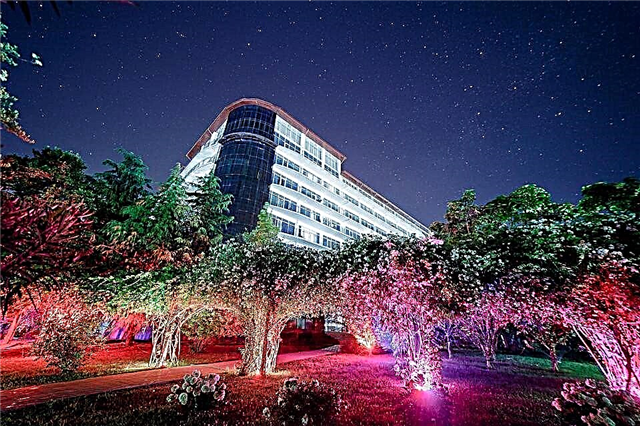The author of the famous poem "A Cloud in Pants" was born in Georgia. Despite the fact that Mayakovsky's father was a Cossack and his mother was Ukrainian, in the poem "Vladikavkaz - Tiflis" he calls himself a Georgian. When Volodya was 13 years old, his family moved to Russia. In many cities where Mayakovsky traveled and lived, monuments and museums of the poet were erected.
Memorial Museum in Bagdati

House Museum of V. Mayakovsky in Bagdati. V. Mayakovsky was born in this house in July 1893
Mayakovsky was born in the village of Bagdati, 25 km from the Georgian city of Kutaisi. He was born into the family of a former Zaporozhye Cossack who moved to Georgia and worked as a forester.
The Mayakovsky Museum in his homeland was created in 1940. In the wooden house where the poet's childhood passed, there is a memorial exposition - antique furniture, a bookcase, a towel with Ukrainian embroidery, a wall clock and personal belongings.

Interior of the house of the V. Mayakovsky Museum in Bagdati
In a modern building opposite, there are exhibits that tell about the literary work of Mayakovsky. The museum is located at 51 Bagdatskaya Street and is open daily from 10:00 to 17:00.
The building of the male gymnasium in Kutaisi
Like his parents, Vladimir spoke Georgian fluently and in 1902 he was sent to a male gymnasium in Kutaisi. The boy studied successfully, the teachers were very pleased with him. Everything went well, but in 1906 Mayakovsky's father was pricked with a needle, who sewed papers, got blood poisoning and died. The orphaned family left Georgia and moved to Moscow.

View of the gymnasium in Kutaisi where V. Mayakovsky studied. On the left is a monument to V. Mayakovsky
A beautiful three-storey building in Kutaisi, where the poet studies, was erected at the end of the 19th century by the architect Enfiazhiev. Now there is the city gymnasium number 1, and in front of the windows there is a monument to Mayakovsky.
Apartment in Spiridonevsky lane
Upon arrival in Moscow, Volodya entered the 4th grade of the 5th classical gymnasium on Povarskaya Street. The family was not rich, there was only enough money to rent a small apartment on the corner of Malaya Bronnaya Street and Kozikhinsky Lane. The apartment on the 3rd floor in the Yelchinsky house had central heating.

View of the house at the address: Moscow, Spiridonevsky lane, 12/9 where V. Mayakovsky lived
In Spiridonyevsky lane, 12/9, the family lived from 1906 to 1907. The future poet was expelled from the gymnasium because his family could not contribute money for his studies. Today, the old brick building houses residential apartments, while shops and restaurants are located on the ground floor.
Moscow School of Painting, Sculpture and Architecture
In 1911, Mayakovsky entered the art school on Myasnitskaya, 21. During his studies, the young man created several paintings, many drawings and humorous cartoons of friends and acquaintances. In 1912, the aspiring artist even took part in an exhibition of young painters.

View of the Moscow School of Painting, Sculpture and Architecture where V. Mayakovsky studied
During these years, the young man actively participated in illegal revolutionary activities and visited prison three times. In 1914 he was expelled from the school for "public speaking."
In the Soviet years, the educational institution was transformed into the Second Free Art Workshops, and later reorganized into the Surikov Art Institute and the Architectural Institute. Now the building belongs to the Russian Academy of Painting, Sculpture and Architecture.
Polytechnical Museum
Article: Polytechnic Museum - amazing in the world of science

View of the building of the Polytechnic Museum
At the beginning of the last century, one of the oldest scientific and technical museums in the world was a place where talented poets loved to perform and public scientific experiments were carried out. For the first time, Mayakovsky entered the stage of the Museum's Large Auditorium on November 11, 1913. He came out in front of the public in a bright yellow sweater, which after that came to be considered "the height of indecency in the poetic environment."
Mayakovsky did not pay attention to criticism of ridicule, wrote a lot and was only interested in poetry. From 1913 to 1916, he appeared at the Polytechnic Museum 44 times. In the 1920s, getting to Mayakovsky's evening was not easy. A crowd of people wishing to listen to the poems performed by the author tore his posters from the walls.
Apartment on Krasnaya Presnya

Memorial Museum "Apartment on Bolshaya Presnya"
After Spiridonyevsky lane, the Mayakovskys changed several apartments. The reason for the frequent travel was poverty - the poet's mother managed to earn very little. In August 1913, the family settled in Krasnaya Presnya in an apartment of four rooms, the walls of which were covered with yellow wallpaper. Here Vladimir wrote 40 poems.
Now in the house number 36, building 1, where Mayakovsky lived until May 1915, an exhibition is open dedicated to the poet's American daughter, Patricia Thompson. One part of the museum tells about the poet's trip to New York in 1925, and the other - about the history of the family of Patricia Thompson.
House 52 on Mayakovsky Street in St. Petersburg

In this house at the address: St. Petersburg, st. Mayakovsky, 52 since 1915. to 1918 lived V. Mayakovsky
At the end of the summer of 1915, the poet settled on Nadezhdinskaya Street, which later began to bear his name. Mayakovsky rented a bright room with two windows on the 5th floor in apartment No. 9 and served as a draftsman at the Petrograd Automobile School.
The Moscow writer SD Spassky, who once visited Nadezhdinskaya Street, described the apartment as a "temporary refuge." There was only a sofa and a desk in the room. Mayakovsky left here in 1918. In memory of the poet's stay, a memorial plaque hangs on the house.
Apartment in Poluektoviy lane

Mayakovsky, Lilya and Osip Briki lived in this house at the address: Moscow, Sechenovsky lane, 5
In 1919, Mayakovsky, Lilya Brik and her husband Osip Brik moved from St. Petersburg to Moscow and lived in Khamovniki for over a year. Everyone worked, but there was so little money that Lilya Brik fell ill with vitamin deficiency.
Brick house No. 5 in Sechenovsky - the former Poluektoviy lane has survived to this day. Despite its considerable age - it was built in 1907, people still live here.
Profitable House of the Russian Society for Capital and Income Insurance

V. Mayakovsky worked in this house at the address: Moscow, Milyutinsky lane, 11
In Milyutinsky lane, 11, from 1919 to 1922 ROSTA - Russian Telegraph Agency worked. Mayakovsky got a job there as the author of "Windows of Satire". He and other artists drew posters by hand, replicated them using stencils, and hung them in empty windows in Moscow stores.
According to the recollections of the poet himself, the work took a lot of effort and almost did not bring money, but everyone worked with enthusiasm. Now the former ROSTA building is a six-story residential building.
Exposition in Studenetsky lane

Memorial apartment of the Mayakovsky in Studenetsky lane (address: Moscow, Studenetsky lane, 6, apt. 20)
One of the branches of the Moscow Museum of the Poet occupies an apartment in which the artist Lyudmila Vladimirovna Mayakovskaya lived since 1927. The museum exposition was created in 1972, after the death of Mayakovsky's elder sister.
For more than half a century, visitors were not allowed here, and the updated exposition was opened only in 2019. In the memorial apartment you can learn about the Mayakovsky family. Exhibitions and meetings with famous people are held here.
Mayakovsky's apartment in Gendrikov lane

House at the address: Moscow, Mayakovsky Street, 15. This house was the apartment of V. Mayakovsky
In 1926, after long walks through the authorities, Mayakovsky received a small apartment and spent a huge amount of money for those times on redevelopment of housing - more than 3 thousand rubles. After the reconstruction, three separate rooms appeared, a living room, a small kitchenette, and a combined bathroom with a sit-down bath.
The apartment was the real headquarters of LEF - the "Left Front of Art".Since mid-1929, the poet's friends gathered there to discuss the release of the next issue of the magazine or play cards. Among the guests were famous people - Pasternak, Aseev and Meyerhold.

View of the entrance to the State Museum of Vladimir Mayakovsky at the address: Moscow, Lubyansky proezd 3/6, building 4
In 1935, the lane was named Mayakovsky, and 3 years later, the poet's library-museum was opened in house No. 15. Visitors were shown Mayakovsky's study: the dining room, the poet's manuscripts and books. Over a quarter of a century, more than half a million people have visited the museum.
In 2003, the memorial house was rebuilt, and all the exhibits were transported to Lubyansky proezd 3/6, building 4 - to the State Museum of Vladimir Mayakovsky. Since 2013, the building with fixed assets has been closed for major repairs.
Mayakovsky's grave at the Novodevichy cemetery

The grave of V. Mayakovsky at the Novodevichy cemetery
In early 1930, Mayakovsky left the REF and joined the RAPP - the Russian Association of Proletarian Writers. As a result of this act, his former comrades turned away from him. The poet moved more and more away from his former friends and plunged into depression. On April 14, 1930, in his office in an apartment in Gendrikov Lane, he shot himself with a Mauser.
Mayakovsky was buried at the Novodevichy cemetery. His grave is located on the 1st site, in the 14th row. The bust and decoration of the monument were made by the sculptor A.P. Kibalnikov. The name of the poet and the years of his life are indicated on the granite tombstone, and there are always fresh flowers in front of it. Mayakovsky's mother and two sisters are buried nearby.


